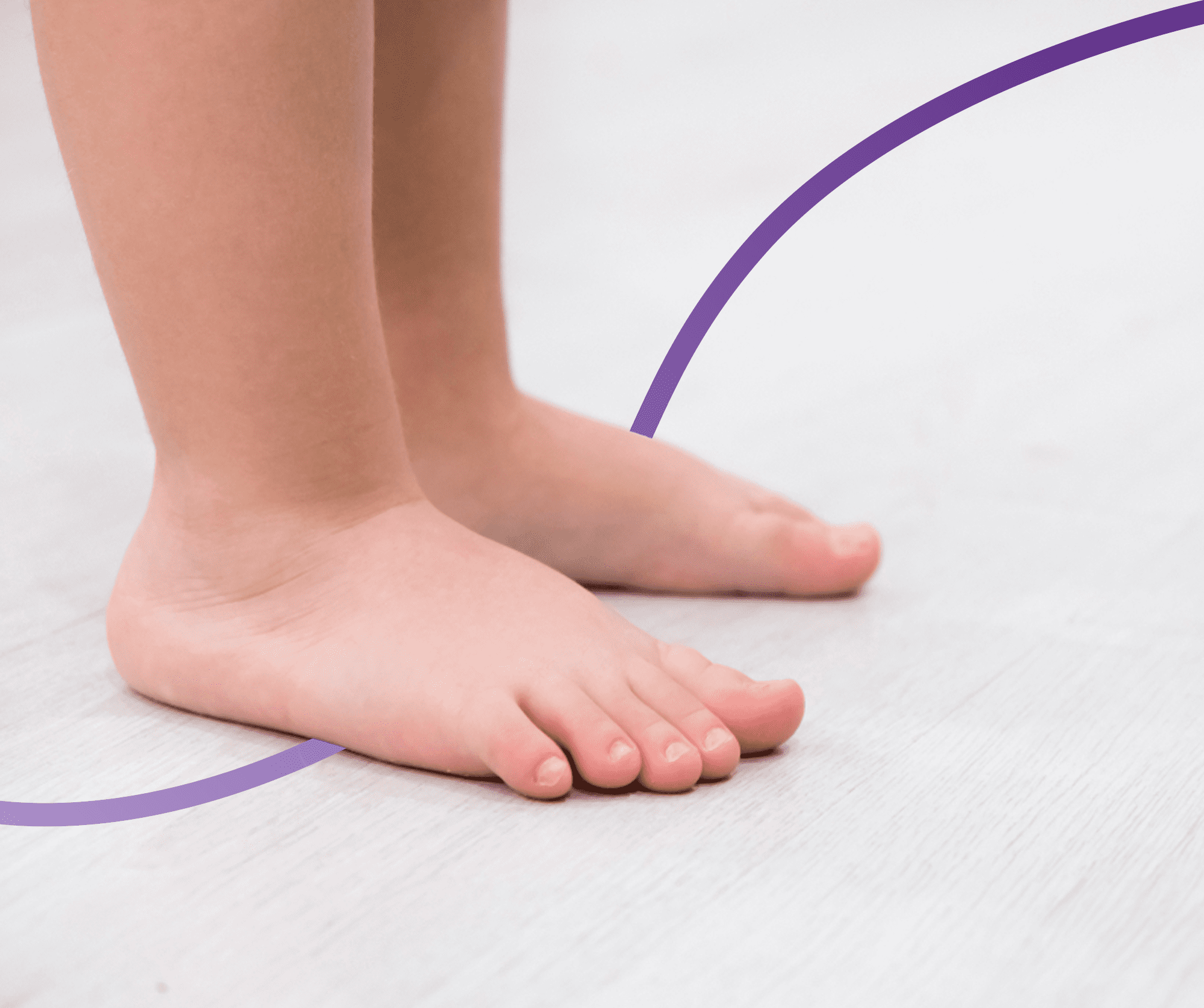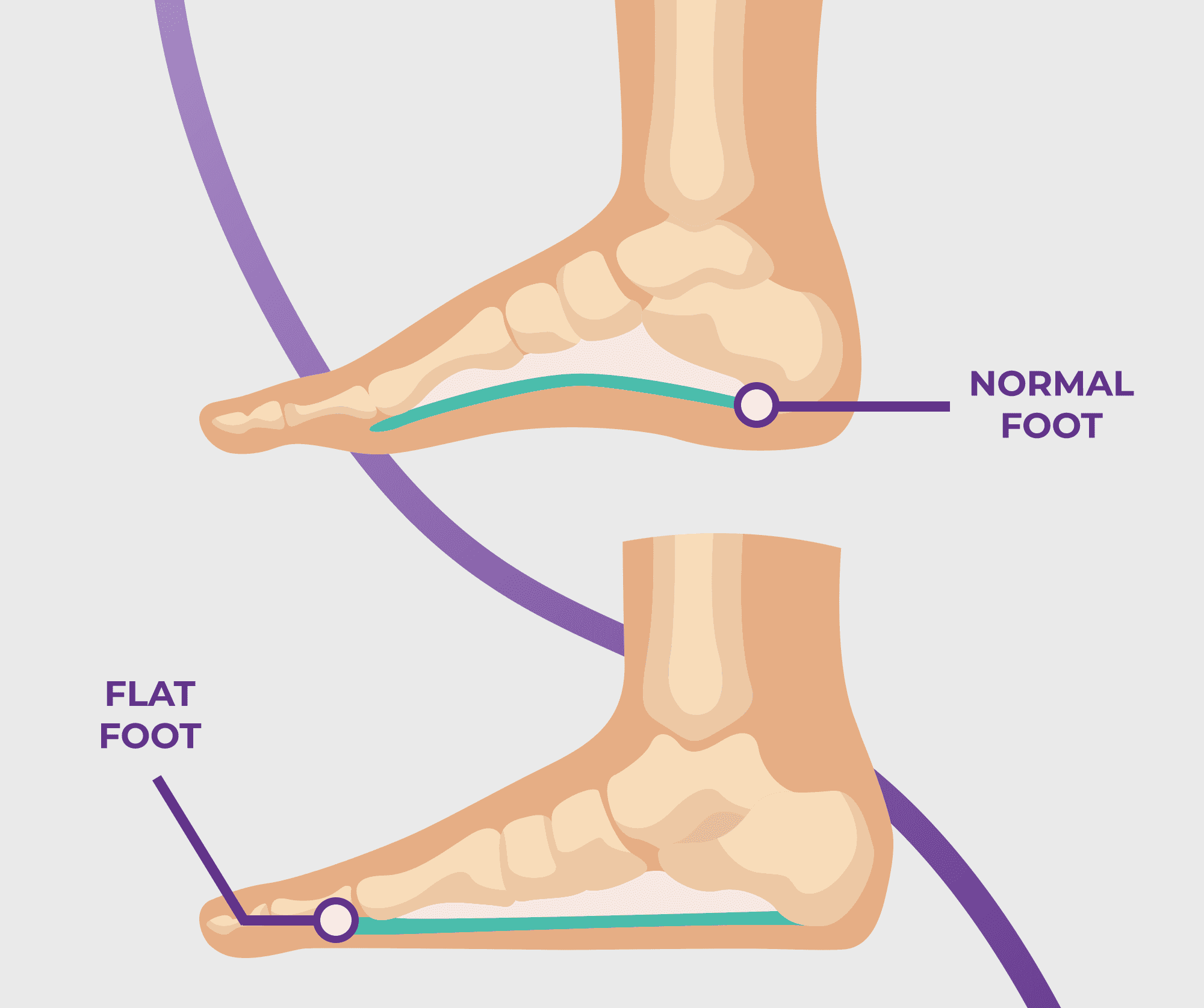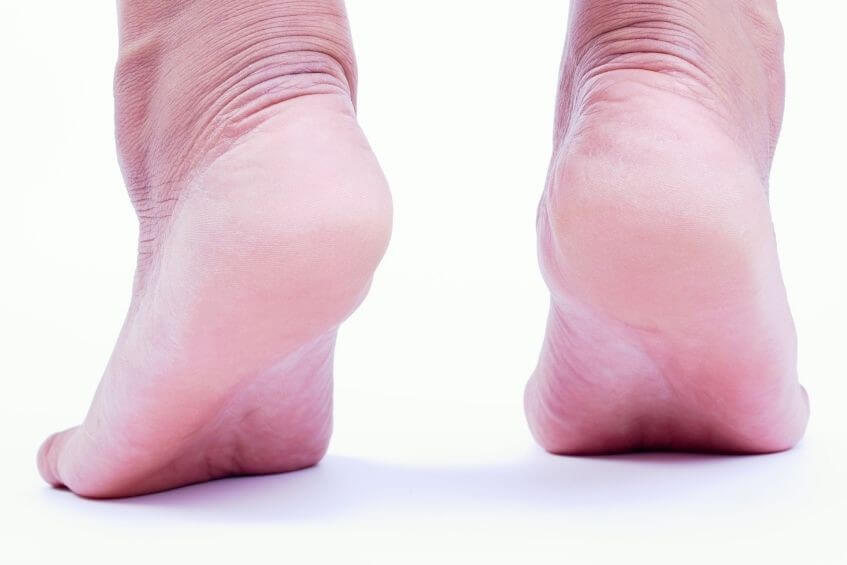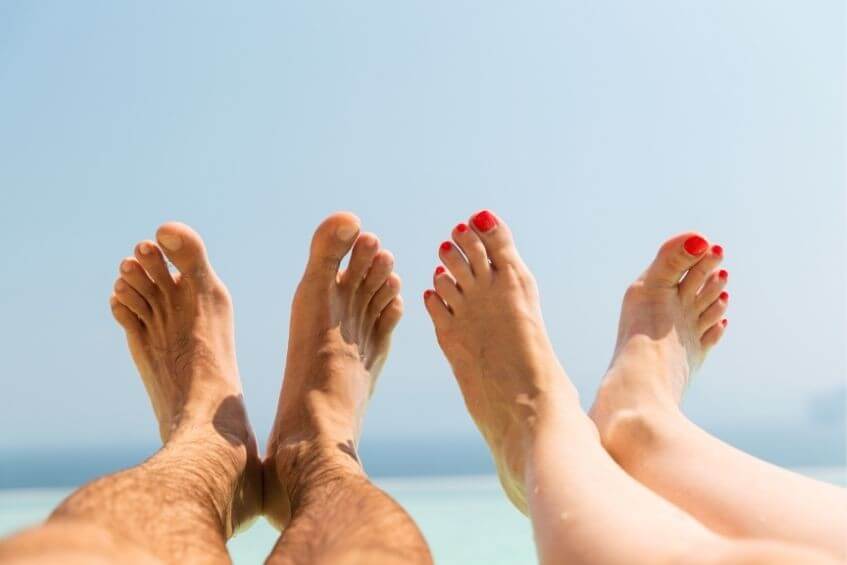
Jump to section
Noticing flat feet is a common concern for parents who are worried about their child developing foot pain and problems. Our Brisbane podiatrists are highly experienced in working with children with flat feet at all ages, taking care to carefully evaluate each child and the impact that their feet are having on their daily life.
Having flat feet means that instead of having a natural arch along the inside edge of your feet when you stand, you have no visible arch,
with the inside edge of your feet touching the ground - or coming close to it. Flat feet are often described colloquially as fallen
arches,
though in reality for most people, their arches never ‘fall’ - they simply don’t form in the first place. Medically, we
refer to flat feet as a pes planus foot type. When we talk about flat feet in children, there are a few things to keep in
mind:
Simply having flat feet does not sentence a person to definite pain or injury in the future. Flat feet have a bad reputation because there are many musculoskeletal problems where those with flat feet have a higher risk of developing the problem,, than those with a neutral foot type. This is due to the way that muscles and tissues are used when walking with a flat foot posture. Nonetheless, some people with flat feet do not experience any foot pain related to their flat feet, especially if they support their feet with good footwear.
If you’re worried that your child is the only one with flat feet, it may give you comfort to know that studies report a prevalence of between 20% and 30% for flat feet,, which accurately reflects what our podiatrists see among our patients at our clinics. With this said, the true percentage of those with flat feet is unknown as there is no worldwide consensus among the profession about the best way to grade and diagnose flat feet, which can lead to varying statistics.
It is over a child’s first ten years that their arches form, and this process tends to happen relatively spontaneously. From our
experience, we would typically expect that children aged two years old would still have flat feet, given the flexibility still present in
their ligaments and their natural lack of neuromuscular control at that age. We would expect that arches would be present by around 6 years
of age, after which the arch would remain relatively stable. With this said, there is a large spectrum of normal values for children
when it comes to arch development, so when we look for warning signs in children relating to their foot type, we look more at any pains
or problems they are experiencing with the feet and legs, rather than the presence of flat feet on their own.
Flat feet are classified by two different categories - whether they are congenital or acquired, and whether they are rigid or flexible.
Congenital flat feet are present from birth, where the arch never forms. Acquired flat feet develop when an arched foot flattens later in
life. This often occurs progressively as a result of a disease, such as posterior tibial tendon dysfunction, arthritis,
trauma, or a charcot foot collapse as a result of diabetes.
Most cases of flat foot are flexible, where the foot and the joints can be easily manipulated with the hands, and remain flexible. Those with flexible flat feet also tend to have an appearance of an arch when their foot is lifted up off the ground. Rigid flat foot is typically rare, developing from either abnormal bone development or an abnormal connection between the bones. Like the name suggests, this foot is rigid and cannot be easily manipulated with the hands.
In the first years of life, flat feet are a normal and healthy occurrence. Babies are born with a big fat pad on the bottom of their feet and no strong, defined foot muscles or muscle strength. Causes and risk factors for flat feet continuing into primary school years include:

The symptoms of a flat foot is simply having an arch that is close to the ground, or comes into contact with it. Any pains or problems that may arise are not symptoms of a flat foot type, but another condition or injury that a flat foot posture may have contributed to.
In our clinic, we diagnose flat feet using a person’s history and presentation, paired with a gait analysis, hands-on assessment and measuring their foot posture index.
As parents ourselves, we understand the concerns that many of the parents we see have when it comes to demystifying the ‘unknowns’ about their children’s feet. While doctors can help treat a range of problems and medical conditions, they don’t specialise in managing conditions that are often asymptomatic like flat feet, so will often refer to a podiatrist for ongoing care and support.
Our rule of thumb here is that if either your child is experiencing any pain or other symptoms, or you’re seeing something in your children’s feet or the way that they are walking that is ringing alarm bells for you, listen to your intuition and bring them in for a foot health check. The outcome of the assessment is either that you’ll get peace of mind that your child is on the right track and no damage is being done, or otherwise we may be able to diagnose and treat a pain or problem your child may be facing.
Our podiatrists work to fix and treat the problems that can arise as a result of flat feet, such as muscle and tendon pains and strains, corns and calluses, overuse injuries and more. This means giving children back the freedom to run, play, explore and live happy, pain-free lives.
The flat foot posture itself cannot be permanently fixed by any treatment aside from surgery, which isn’t recommended in children aside from the very few instances it may be indicated where something bigger and more sinister is happening beneath the surface.
In most cases, no, a flat foot posture is determined by your body and so cannot be prevented. What we can help to prevent is the pains and other symptoms that a flat foot posture can lead to. If your flat feet have already led to aches and pains, we may suggest a range of therapies to prevent the pain from recurring, or starting in the first place. This includes:

Our feet are the foundation for the entire body, so it's important that they have enough strength to tolerate our activity levels. Use
these three exercises to help strengthen your feet.

Not everyone needs orthotics, but they can play an integral role in treating or relieving pain in several foot and lower limb conditions.

The heat and humidity of an Australian summer makes it a prime time for issues to arise, so our newest podiatrist Lucy has put together
seven helpful tips to keep your feet healthy and problem free throughout summer.
| Monday | 7:40am - 6:00pm |
| Tuesday | 7:40am - 6:00pm |
| Wednesday | 7:40am - 6:00pm |
| Thursday |
7:40am - 6:00pm |
| Friday | TEMP CLOSED |
| Saturday | CLOSED |
| Sunday | CLOSED |
Ground Floor, 344 Queen Street,
Brisbane City QLD 4000
| Monday | 7:40am - 6:00pm |
| Tuesday | 7:40am - 6:00pm |
| Wednesday | 7:40am - 6:00pm |
| Thursday |
7:40am - 6:30pm |
| Friday | 7:40am - 5:00pm |
| Saturday | 7:40am - 4:30pm |
| Sunday | CLOSED |
Newmarket Village, 114/400 Newmarket Rd, Newmarket QLD 4051